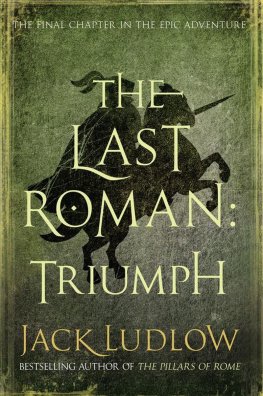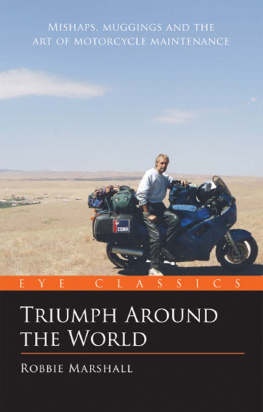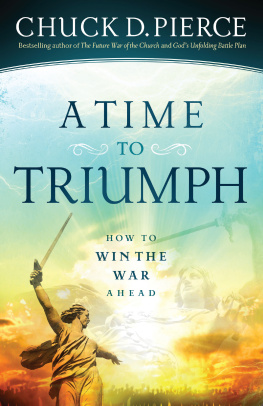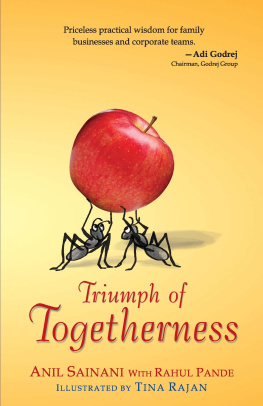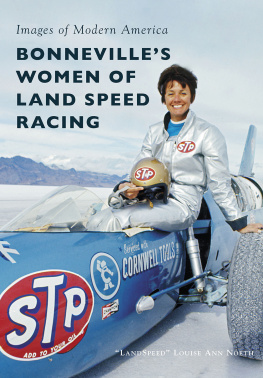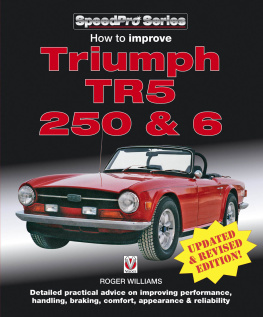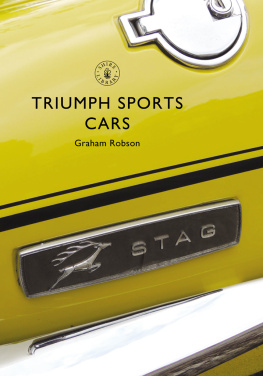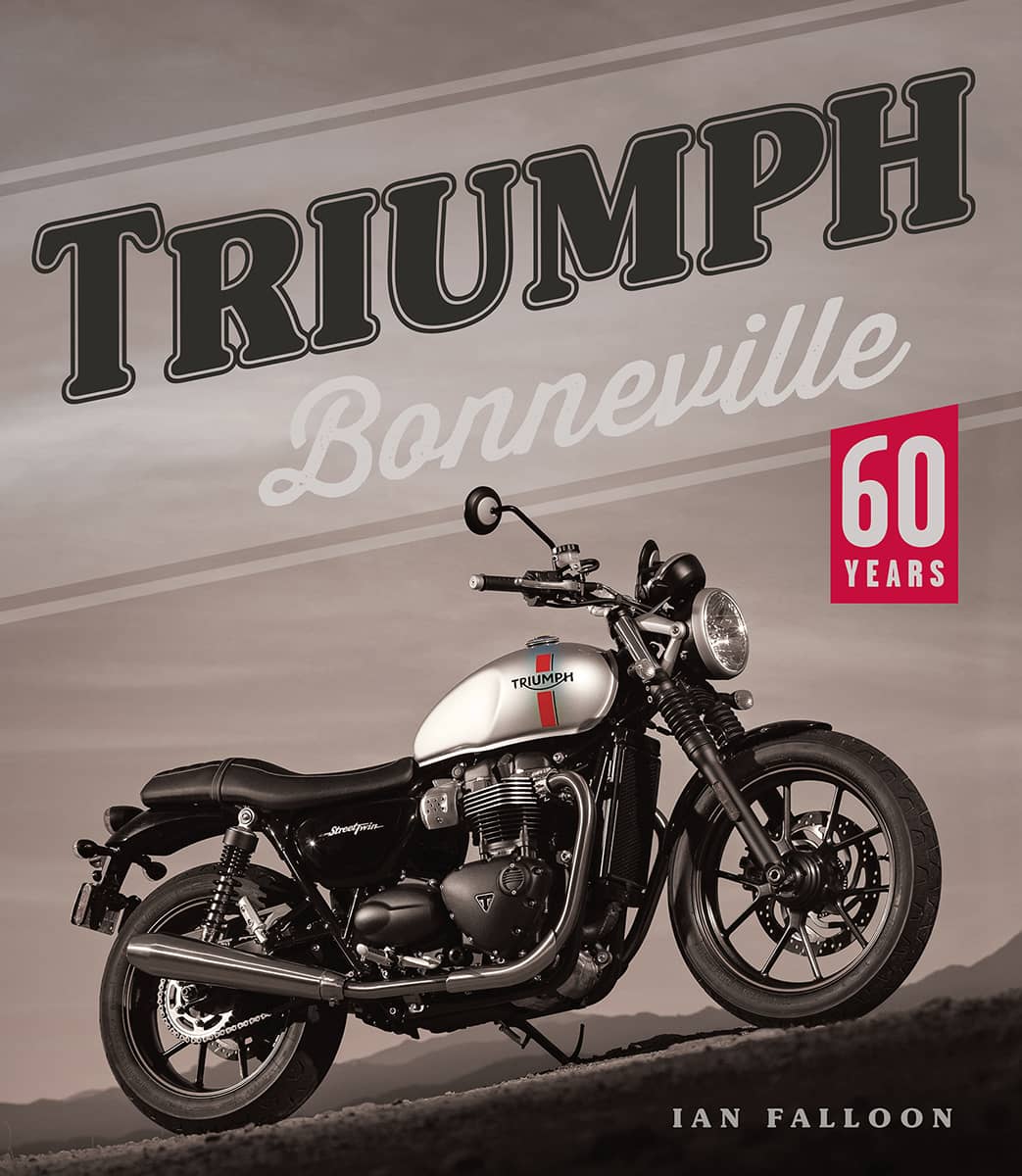
2018 Quarto Publishing Group USA Inc. Text 2018 Ian Falloon
Photography 2018 Ian Falloon, except where noted otherwise
First published in 2018 by Motorbooks, an imprint of The Quarto Group, 401 Second Avenue North, Suite 310, Minneapolis, MN 55401 USA. Telephone: (612) 344-8100 Fax: (612) 344-8692
www.QuartoKnows.com
All rights reserved. No part of this book may be reproduced in any form without written permission of the copyright owners. All images in this book have been reproduced with the knowledge and prior consent of the artists concerned, and no responsibility is accepted by producer, publisher, or printer for any infringement of copyright or otherwise, arising from the contents of this publication. Every effort has been made to ensure that credits accurately comply with information supplied. We apologize for any inaccuracies that may have occurred and willresolve inaccurate or missing information in a subsequent reprinting of the book.
Motorbooks titles are also available at discount for retail, wholesale, promotional, and bulk purchase. For details, contact the Special Sales Manager by email at specialsales@quarto.com or by mail at The Quarto Group, Attn: Special Sales Manager, 401 Second Avenue North, Suite 310, Minneapolis, MN 55401 USA.
Digital edition published in 2018
Digital edition: 978-0-76036-092-7
Hardcover edition: 978-0-76036-091-0
Library of Congress Cataloging-in-Publication Data
Names: Falloon, Ian, author. Title: Triumph Bonneville : 60 years / by Ian Falloon. Description: Minneapolis, Minnesota : Motorbooks, 2018. | Includes bibliographical references and index. Identifiers: LCCN 2018003138 | ISBN 9780760360910 (hardback) Subjects: LCSH: Bonneville motorcycle--History. | BISAC: TRANSPORTATION / Automotive / General. | TRANSPORTATION / Motorcycles / General. | TRANSPORTATION / Motorcycles / Pictorial. Classification: LCC TL448.B66 F35 2018 | DDC 629.227/5--dc23 LC record available at https://lccn.loc.gov/2018003138
Acquiring Editor: Darwin Holmstrom
Project Manager: Jordan Wiklund
Art Director: Brad Springer
Cover Designer: Jay SmithJuicebox
Designs Layout: Silverglass Design
On the frontis: With the T120, Triumph managed to successfully create a retro Bonneville with an old soul, but with thoroughly modern performance and function.
On the title page: Another limited-edition Bonneville was the 2010 T100 Bonneville Sixty. The Meriden Blue/Caspian Blue colors replicated the 1960 T120. Triumph Motorcycles
INTRODUCTION
Birth of a Legend
O n a bright morning in September 1956, Texan Johnny Allen arrived at the Bonneville Salt Flats in Utah. The diminutive Allen slid into the cockpit of a streamlined two-wheeler nicknamed the Texas Ceegar. Inspired by the fuel drop tanks of a Mustang fighter plane, this amalgamation of American and British expertise carried a Texas star on its nose and the Triumph name on its side.
With power supplied by a nitro-methane-fed 650cc Thunderbird parallel twin, as ridden by Marlon Brando in The Wild One, the cigar-shaped streamliner tore across the salt flats at an average of 214.40 miles per hour (345.188 kilometers per hour). Although this was clearly a new world record, because the American Motorcyclist Association (AMA) was not affiliated with the world body Fdration Internationale de Motocyclisme (FIM) at that time, FIM didnt recognize it. But Triumph boss Edward Turner was unperturbed. He had the Texas Ceegar air-freighted to the Meriden factory in England, first to appear in a BBC TV sports program and then for display on the Triumph stand at the annual London Earls Court Motorcycle Show.

The new T120 was introduced in 2016. Here, it is shown with a 1959 T120 Bonneville, the colors and details intentionally designed to replicate the original. Triumph Motorcycles
Powered by a developed Thunderbird engine, the Texas Ceegar successfully combined the best of American and British engineering. In this streamliner, Johnny Allen set a new world speed record of 214.40 miles per hour in 1956. Triumph Motorcycles
All this publicity fueled the demand for a higher performance version of the production T110 650cc twin. But Turners distrust of racing as a promotional tool was well known, and initially the companys policy was unchanged. Rather than provide a higher performance model, Triumph initially offered a limited number of higher performance components for purchase. This included pistons, valves, camshafts, valve springs, and a megaphone exhaust. The release of a splayed-port Delta twin carburetor cylinder head for the 500cc Tiger T100 in 1957 also saw demand for a 650cc version, particularly from American customers. So for 1958, Triumph finally offered a twin carburetor 650cc splayed-port cylinder head as an optional replacement for the T110. This provided the T110 the performance and reliability it finally needed to win the important Thruxton 500 production race. A young Mike Hailwood teamed with Dan Shorey for the victory. The twin carb heads were also successful in America, Triumphs taking eight of the first ten places in the 1958 Big Bear Run Desert Enduro.
While motorcycle sales were still strong in the United Kingdom at this time, Triumph was the most popular imported motorcycle in America and the company relied heavily on the US market. Eventually, Turner bowed to US pressure to build a production twin carburetor 650. This would be the Bonneville, the motorcycle that would define Triumph for the next three decades. As it was considerably more affordable than a Norton 650 SS, and faster than a BSA 650, the Bonneville became the favored mount for the young British working class. Of all the British twins, it was the lightest and most elegant, even if the handling was initially subpar. But as the British market collapsed, the Bonneville evolved into the quintessential sporting motorcycle for Americans. As that most eloquent of motorcycle magazines, Cycle, stated in its 1969 Bonneville road test, This prince among two-wheelers is one of the two or three most


